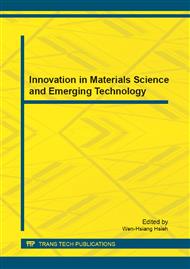p.470
p.475
p.480
p.485
p.489
p.494
p.499
p.505
p.510
PAPR Reduction Using Huffman Coding Combined with Selective Interleaver for OFDM Transmitter
Abstract:
Orthogonal Frequency Division Multiplexing (OFDM) technique is becoming the chosen modulation technique for wireless communications. OFDM can provide large data rates with sufficient robustness to radio channel impairments. There are two main drawbacks with OFDM, the peak to average power ratio and its sensitivity to frequency errors. The signal peak to average power ratio reduction solution play an important role to improve performance of OFDM that peak occurs after symbols fed to FFT to produce time domain signal, adding signals up coherently. In This paper we proposes technique to reduce the PAPR using Huffman coding combined with selective interleaver as distortion less scrambling technique. We utilize the amount saved in the total bit rate by the Huffman coding to send the information of the selected interleaver and encoding table for accurate decoding at the receiver without reducing the effective throughput. Performed computer simulations have shown that the proposed scheme outperform the performance of most of the recent PAPR reduction techniques in most cases. By using this method 2.63 dB PAPR reduction is achieved.
Info:
Periodical:
Pages:
489-493
Citation:
Online since:
December 2011
Authors:
Price:
Сopyright:
© 2012 Trans Tech Publications Ltd. All Rights Reserved
Share:
Citation:


